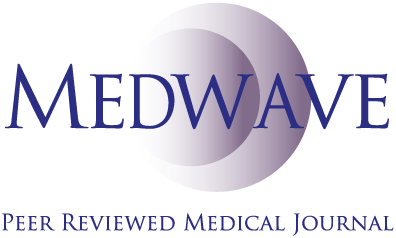Comments
← vista completaPublished on June 10, 2016 | http://doi.org/10.5867/medwave.2016.05.6466
Copying the development: mirror neurons in child development
Copiando el desarrollo: neuronas espejo en el desarrollo infantil
Abstract
Since intrauterine life, our brain is exposed to diverse internal and external factors that generate epigenetic changes affecting the neural networks and thus modifying the properties of the mirror neurons of the developing infant. We consider that changes on the mirror neurons may play a role on the neuro-developmental pathologies of an infant where no structural brain lesion is observed.
Aristotle once said “imitation is connatural to men”
It is considered that since child-birth the brain of the infant possesses a mirror neuron system [1]. This system is exposed to external and internal factors from the perinatal period that posteriorly to conception, generate epigenetic changes that affect the brain neuroplasticity. Such changes are originated for the purpose of guarantying an efficient interaction with the environment and are due to the ability of the neural networks to do multitasking [2].
The diversity of functions in neural networks allows to explain the visual-sensorial integration capacity with the motor codification [2]; giving rise to the hypothesis of direct coupling (Rizzolatti et al. 2001), suggesting we understand actions and intentions as we map the visual-auditory representation of the activity through our motor representation of the same activity [3].
Rizzolatti et al. describe the mirror neuron system as a group of neurons located in the ventral premotor cortex and inferior parietal lobule; a system stimulated by our own activities and by the observation of similar activities done by others, with the purpose of facilitating the integration of ourselves with the environment [4].
During the neonatal period mirror neurons functions can be noticed, by observing the gesticulation of the lips and tongue of the neonate as a response to the parents´ stimuli. [5]. This imitation even though not fully conscious is not a reflex since it is remembered by the infant and allows the improvement of the posterior interaction with his or her parents in each new stimulus [6].
The disruption of this activity has been declared by some authors an early sign of autism specter disorder [5]; applying on a practical scale the broken mirror theory which says that the disruptions of the mirror neuron system are the cause of the autism specter disorder [7].
When growing up the infant is exposed to more visual-sensorial stimuli, observing activities that he/she deconstructs to repeat in order to reach a goal. This activities are repeated without intention by the infant until he or she learns to structure them in relation to the environment surrounding him or her. So, a feedback is generated in the infant with more stimuli and behavior modification; subsequently the child adapts the velocity of movements and improves their dexterity (fine motor ability) [8],[9]. The development of motor abilities intervenes on the development of perceptual abilities [1]. Imitation of activities by the infant depends on the notion of the infant regarding a future response from the grown-ups [9]. The mirror neurons system is feed backed by the observation of the acts [1].
Simpson et al., in their review, observed how the imitation of neonates at one month of birth is related to an adequate functioning of the mirror neuron system, thus they infer that the observation of neonatal imitation behavior could help as a predictor of the infant performance in his or her subsequent psychomotor development [6].
Because mirror neurons depend on the actions of others to stimulate new abilities, they seem to be a key element on autistic spectrum disorders [3],[4],[7]. In addition to the possible consequences in the mirror neurons systems on younger siblings of patients with autistic spectrum disorders while observing their behaviors [5].
The mirror neuron system works by breaking down each observed activity in its minor components in order to imitate it, so, when the system observes something new, it retakes it from the old memory, discards the new or learns it, this makes learning or the imitation of activities easier [10], a behavior frequently observed in the learning velocity of manual activities by the infants.
Notwithstanding, theories of mirror neuron disruption have only been researched on autism spectrum disorders as is revealed by the review of Hamilton et al., where they mention the results of studies done by Dapretto et al. (2006) and Grezes et al. (2009) about the findings observed on functional magnetic resonance that favor mirror neuron dysfunction on that disorder [7]. Thomaidis et al. found in their research that infants with global developmental delay do not have a specific etiology; besides prematurity and intrauterine growth restriction being the main factors of global developmental delay of infants [11], something understandable as these are causes that directly affect the central nervous system.
Rizzolatti et al. [4] mention the role of mirror neurons, Hamilton et al [7], and Buccino et al. [10], confirm the functional evidence of the system through imaging methods, while Simpson et al. [6] refer to the role of neonates´ imitation as a predictor of the infant’s psychomotor development. Even though it is known that during our first two years of life we acquire a vast repertoire of abilities that will serve as the backbone for our daily life and other activities we decide to learn; the relationship of the mirror neurons and the global development delay or psychomotor delay has not been studied.
Taking into account the studies aforementioned and the role of mirror neurons, we generate the hypothesis that the disruptions of the mirror neurons system can generate pathologies such as global developmental delay/psychomotor delay, in cases where no specific organic etiology is identified.
Notes
From the editor
The author originally submitted this letter in Spanish and subsequently translated it into English. The Journal has not copyedited this version.
Conflicts of interest
The author declares that there are no conflicts of interest.
Funding
The author declares no financial support for writing this article.

